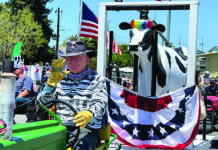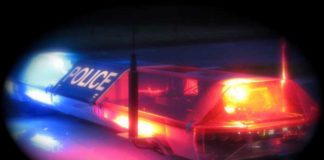Watsonville native Richard Gurnee, who revolutionized the field of scientific taxidermy by pioneering a freeze-drying technique still employed worldwide, died in October after a brief illness. He was 87.
Gurnee graduated from Watsonville High School in 1954, and then studied zoology at Humboldt State University.
But his love for the natural world began earlier than that when he taught himself taxidermy to earn a badge as a Boy Scout. By 13, local hunters sought him out to preserve the animals they killed.
As a graduate student at UC Berkeley, Gurnee was freeze-drying tissue samples when he realized the process could be used for preserving whole animals. He then designed and built a system that did just that.
“He had this amazing engineering mind, on top of the knowledge of natural history and zoology,” said his niece Anne Gurnee. “It was very impressive, and he made his way in the world.”
After graduate school, Gurnee began working at the Smithsonian Institution National Museum of Natural History, where some of his preserved animals are still on display.
But he left in 1965 after a supervisor took credit for his freeze-drying process. He returned to Watsonville, where his father helped him set up his shop at 381 East Lake Ave.
It was there he spent the entirety of his career, preserving animals for museums and natural history displays.
“I think he considered himself really fortunate that he found something he loved that worked for him,” Anne Gurnee said.
The shop will now be run by Mitch Phillips, who interned with Gurnee for five months to learn his techniques.
Richard Gurnee’s process is different from traditional taxidermy, in which the skin of the animal is removed and preserved, then placed over a synthetic frame.
For the freeze-drying process, wires are inserted in the animals’ limbs and neck to position them into a natural-looking state. They are then placed in a vacuum, and as pressure is allowed to return, the liquid essentially evaporates from the body and leaves behind the basic structure of the animal. This allows the preservation of soft-bodied animals such as slugs and insects.
He shied away from family pets, explaining in a 2011 interview that “I don’t do members of the family.”
Called “Unc” by the people who loved him, Gurnee was known as a kind, goofy warm man.
“From the very first time I met Unc, he always gave me a big bear hug, every time,” Anne Gurnee said. “There was this warmth to him that I don’t know that people would have seen, if they just interacted with him in his shop.”
He was married twice, the first time to Watsonville native Lorene Williamson. His second wife Ruth died in April, six months before him.
He was also a masterful fly fisherman, a hobby for which he frequently used his knowledge of the natural world and was known for tying flies valued by other anglers.
“He could lay that fly exactly where he wanted to on the river,” she said. “It was impressive.”
Gurnee’s work can now be seen in museums, nature centers and educational institutions throughout the U.S., from Florida to Texas to Washington. This includes several in the Fitz Wetlands Educational Resource Center.
“Richard Gurnee’s work combined the truest forms of art and science, allowing so many in our community to get close to wildlife and experience the unique and amazing character of each animal,” said Watsonville Wetlands Watch Executive Director Jonathan Pilch. “The Wetlands Educational Resource Center, like so many other local institutions, is filled with his work and the taxidermied wildlife have been traveling ambassadors for our local wetlands throughout the schools in our community. We’re deeply grateful for his expert craftsmanship and the educational opportunities it has provided to many thousands of local students over the years as well as how generous he always was with his time.”














Nice article! I was well acquainted with Mr. Gurnee; I occasionally gave him specimens of exotic birds for his personal displays. I used to see him at the Santa Cruz County Fair, where I ran the poultry exhibit for about 35 years. He would always come by to say hi. I had a new specimen for him and was looking up his number when I discovered that he had passed away. I am very sad to read of his passing. I would love to connect with his niece, Anne, to share memories.